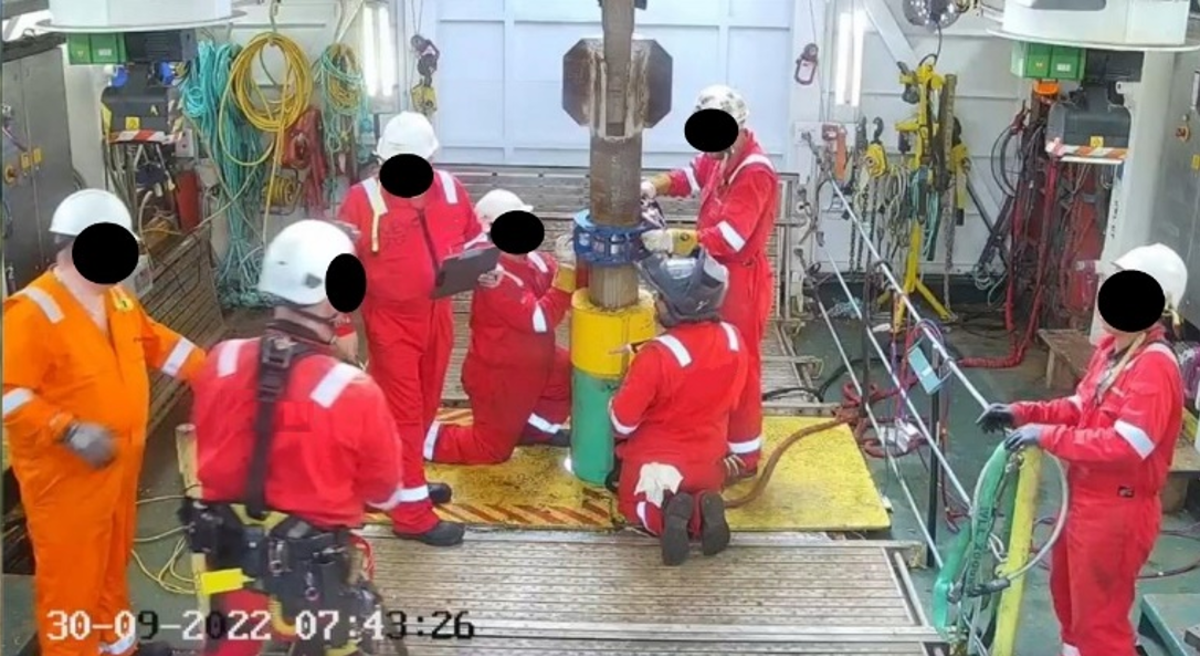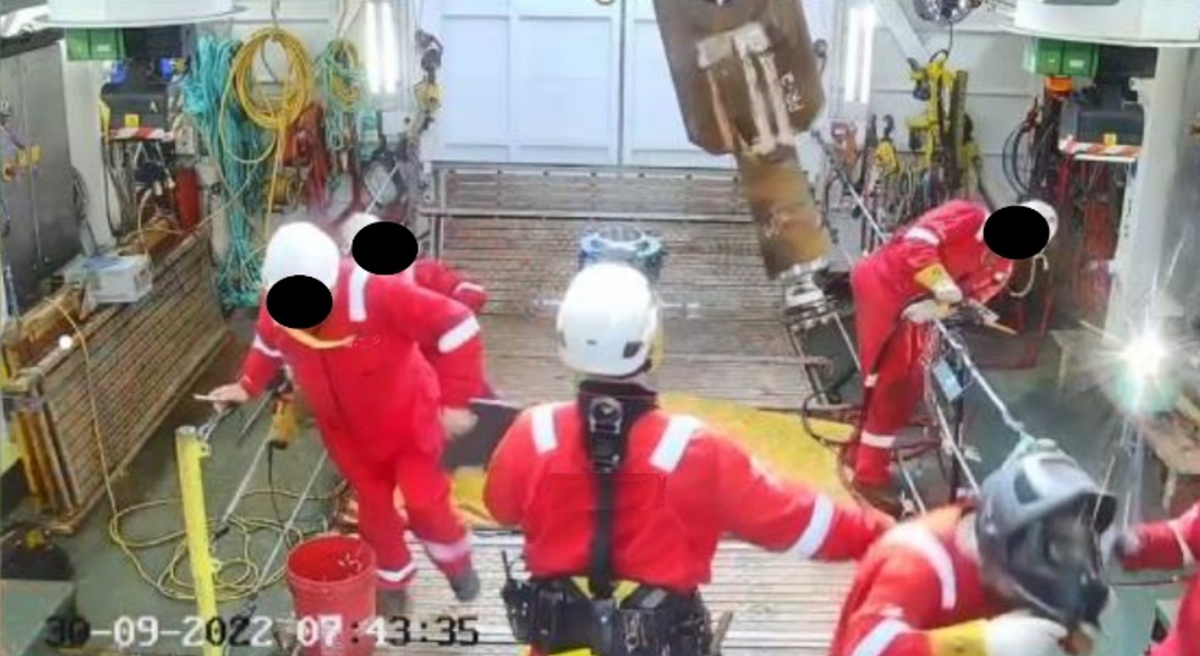Sudden and uncontrollable move of A&R head
- Safety Flash
- Published on 13 March 2023
- Generated on 24 December 2025
- IMCA SF 07/23
- 2 minute read
Jump to:
At the end of offshore pipeline installation operations, a vessel was preparing for pipeline abandonment.
What happened?
The pipe end clamp was in the Hand-off Module (HOM) and had been bevelled and prepared; and the team were in the process of installing and aligning the Abandonment & Recovery (A&R) head for welding. Prior to installing the A&R head, the required volume of water had been removed from the flooded pipe clamped in the HOM.
The A&R head was then lifted into position using the workstation crane. With the A&R head lifted into position, an external pipe clamp was used to help with line-up and to secure the head in the required welding position. As the final adjustments were being made, the A&R head assembly was moved upwards and then ejected in an uncontrolled manner from the pipe end. It swung uncontrollably for a short period but did not drop as it was still supported by the workstation crane. This was brought under control quickly by one of the deck team.
Crew members were nearby (see images) but no-one was injured.

Showing work area before event

Showing A&R head ejected due to pressure
What went wrong?
- There were no vent holes in the A&R head, as was specified by the client.
- The ‘suck and blow’ effect from the residual water in the pipe had not been recognised as a risk, as this incident/event had never occurred at this magnitude before.
- There were more people present (and hence at risk) than strictly necessary.
Lessons learned
- A renewed focus on controls, barriers, and risk management where Line of Fire risks have been identified.
- Can the task be done safely with fewer people present?
- Challenge norms and specifications and assess if they introduce changes with additional risks.
- Consider and plan for “suck and blow” effects for similar operations.
Related safety flashes
-
IMCA SF 18/18
23 August 2018
-
-
IMCA SF 08/16
13 April 2016
-
IMCA SF 14/14
7 August 2014
IMCA Safety Flashes summarise key safety matters and incidents, allowing lessons to be more easily learnt for the benefit of the entire offshore industry.
The effectiveness of the IMCA Safety Flash system depends on the industry sharing information and so avoiding repeat incidents. Incidents are classified according to IOGP's Life Saving Rules.
All information is anonymised or sanitised, as appropriate, and warnings for graphic content included where possible.
IMCA makes every effort to ensure both the accuracy and reliability of the information shared, but is not be liable for any guidance and/or recommendation and/or statement herein contained.
The information contained in this document does not fulfil or replace any individual's or Member's legal, regulatory or other duties or obligations in respect of their operations. Individuals and Members remain solely responsible for the safe, lawful and proper conduct of their operations.
Share your safety incidents with IMCA online. Sign-up to receive Safety Flashes straight to your email.